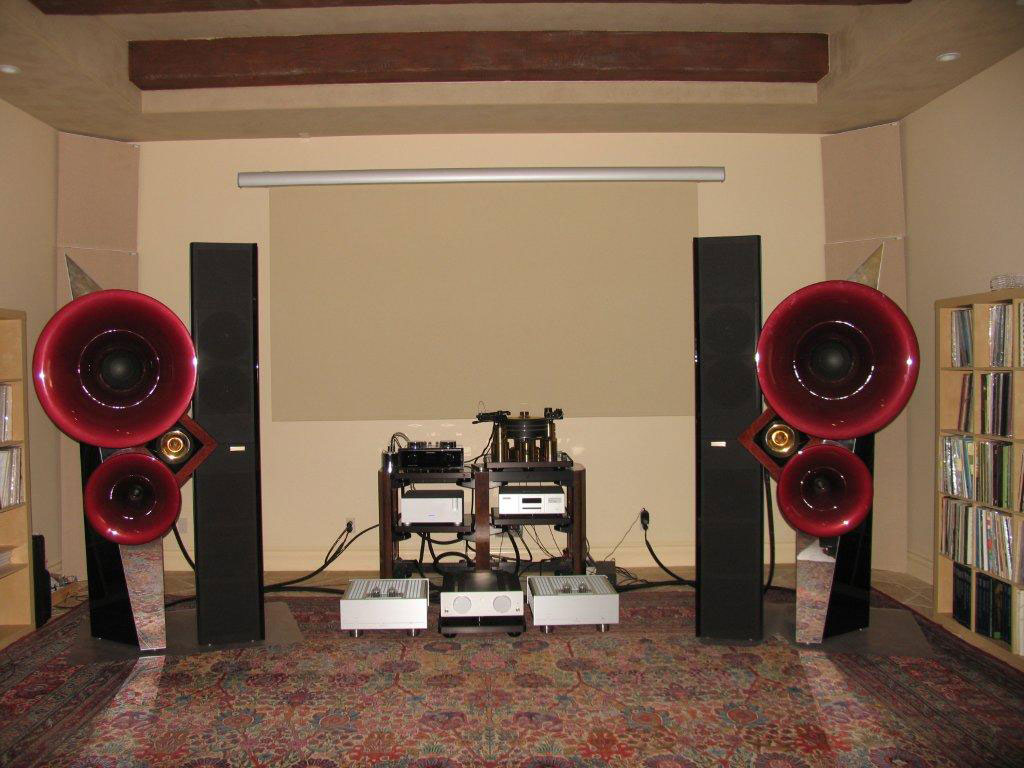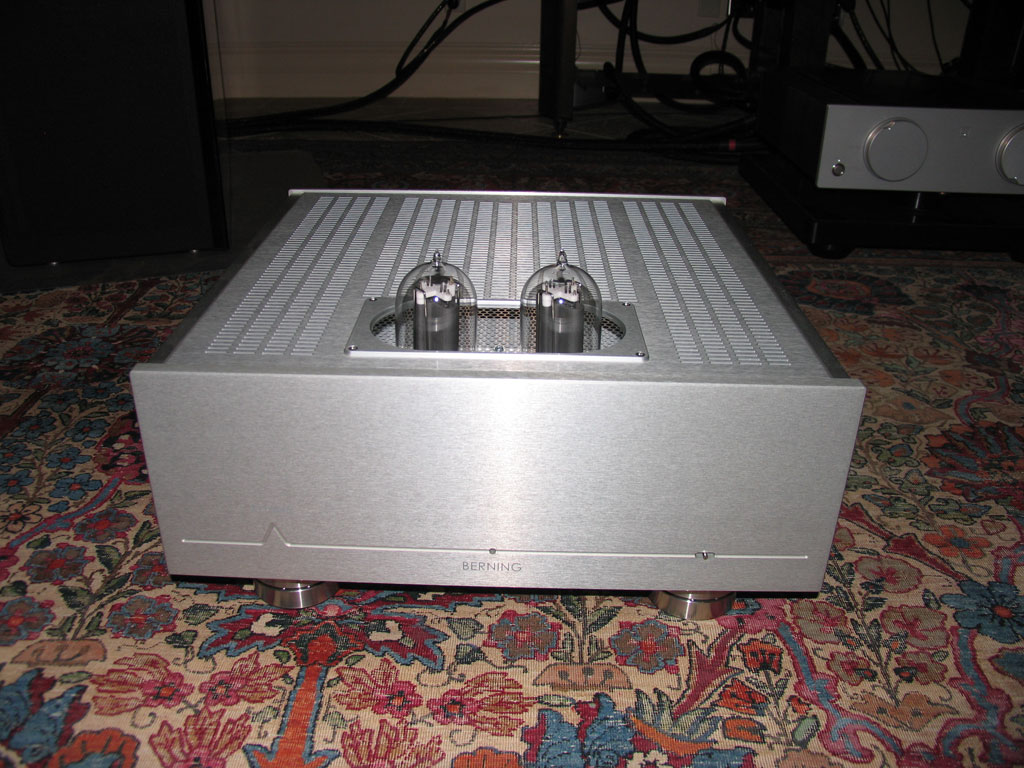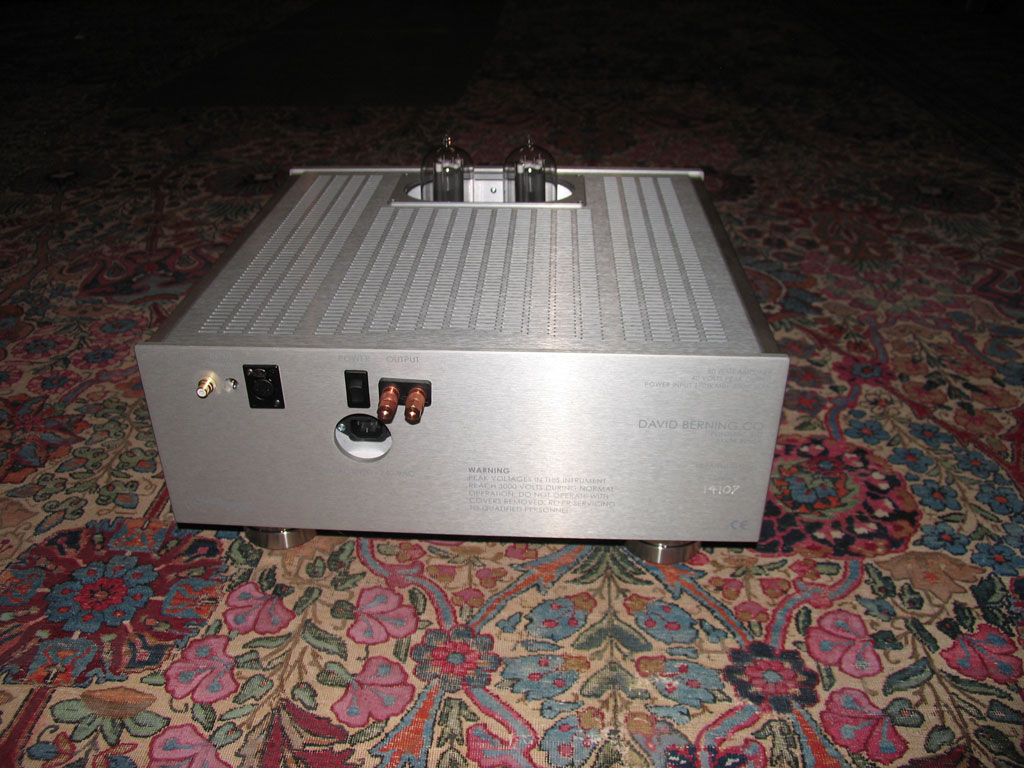Rather than retracing ground previously covered in “A Visit to the Home of the Infamous Encinitas Jim” (Dagogo, April 2014), I refer you to that original article. Subsequent to my initial listening sessions in January 2014, there have been three changes to the system, which, in combination, have had an almost transformative effect on the sound. These changes are as follows: 1) significant revisions to the Acapella La Musika Integrated amp (Acapella Integrated), 2) installation of the pair of Marten Coltrane Supreme 2 speakers (Marten S-2) shown at CES in January, and 3) purchase of a pair of the David Berning 211/845 OTL amps (Berning 211). Normally, I would be somewhat reluctant to comment on any piece of equipment in a system other than my own. In this instance, my familiarity with the Acapella Triolons, the Jorma Prime and Nordost Odin interconnect and speaker cables, and the Einstein preamp (all of which I own) and the EMM Labs XDS1 SACD Player (which I previously owned) in conjunction with an extended audition (nine days), hopefully provide enough reference points that I have a firm basis for forming a credible opinion. While the music was varied, it included the following:

Acapella Triolons with “flaming” red horns, ii) the Berning 211/ 845 amps on the outsides, iii) Acapella La Musika Integrated amp in the center, iv) HRS equipment stand, v) Einstein preamp (top shelf, left side, vi) Ypsilon phono stage under the Einstein, vii) Kuzma Reference 4 Motor Turntable, and viii) EMM Labs XDS1 SACD player underneath. Cables are Jorma Prime.
Digital
Beethoven, Piano Concerto #4 (Gina Bachauer), Mercury Living Presence 432 018-2
Liszt, Piano Concerto #1/ St. Saens Piano Concerto #2 (Rubenstein), RCA Living Stereo
Dubois, Sept Paroles Du Christ, Fidelis FACD 008
Catalani, La Wally, Diva Movie Soundtrack, Sony UK/Zoom B00000IHGU
John Rutter Requiem (Turtle Creek Choir), Reference Recordings RR-57CD
Beethoven, Piano Concerto #4 (Bronfman/ Zinman), Arte Nova Classics DDD, ANO 640100
Beethoven, Choral Fantasy/ Piano Concerto #5 (Bronfman/ Zinman), Arte Nova Classics DDD, ANO 825850
Falla, Three Cornered Hat (Decca SXL 2296) SHM-SACD Japan UCGD 9028 480 5870
American Beauty Soundtrack, Dreamworks 450233
Puccini, Tosca, conducted by Colin Davis Pentatone 2 SACD set, PTC 5186 147
Juerga, Manitas de Plata, Connoisseur Society CD4126 30CD-3004 (1963, his 1st recording)
Celibidache, French and Russian Music EMI 085 6062
Julius Lester, Dressed Like Freedom, Vanguard CDBGPD 175
Led Zepplin Remastered, Atlantic 7567-80415-2
Albeniz, Suite Espanola XRCD 24 FIM XR24068
Rickie Lee Jones, Traffic from Paradise, Analogue Productions SACD 80016858 05
Dire Straits, Brothers in Arms 20th Anniversary Edition, Super Analogue CD 9871498
Oistrakh, Mozart Sinfonia Concertante, 96 KZ 24 bit, Decca 470 258-2
Analogue
Rickie Lee Jones, Traffic from Paradise, Warner Brothers BSK 3196
Chabrier, Espana/ Danse Slav (Paray/Detroit), Mercury Living Presence SR 90212 (RFR-1/ RFR-1)
Beethoven, IX Sinfonie/ Egmont Overture (Fricsay/ Berlin Philharmonic), DGG 138002/003 SLPM
Liszt, Mazeppa/ Hungarische Fantasy (Cherkassky/ Berlin Philharmonic), DGG 138692 SLPM (large tulip, Red Label)
Great Piano Masterpieces (Tamas Vasary and others) DGG 644102 (tulip)
Liszt, Piano Concerto #1 (Tamas Vasary) DGG 138055 SLPM (Red Stereo Label)
The Equipment
Berning 211/ 845 OTL Amps ($73,500) (exclusively available at Hi Fi One)

(Berning 211 and Acapella Integrated) In detail one can also see the 220 volt outlet driving the Acapella aand details even on the Jorma prime cable
Many of you will be aware of Dave Berning and his previous efforts including the well-reviewed Quadrature amplifier, which in many ways set a standard for what could be achieved with an output transformer-less amplifier. The Berning 211 is to some extent the child of that amp. Like many of our children, it builds upon and far exceeds the strengths of the parent. The Berning is fully self-biasing and can use either a 211 or an 845 output tube without any changes or switching. It is equipped with a slow start feature that significantly extends the life of the output tubes and guarantees safe operation. If a tube will not come up to proper bias, the amp does not engage the faulty tube. Likewise the amp has three choices for operation: Standby, Conserve and Full power. At full power, the amp produces 60 watts regardless of load and has constant output impedance over the entire audio spectrum. The noise floor is sufficiently low for use with highly efficient speakers. The amp is differentially balanced with zero negative feedback. Another element of the design is the use of a rather ingenious switch mode power supply with full Power Factor Correction that allows the amps to run on 110 or 220 without internal modification. The chassis is by design light to avoid energy storage and uses a combination of Stillpoint circuit board isolators and their Ultra 5’s and Ultra Bases to isolate the internal circuitry from vibration. Thus, this is pretty much a plug and play set of amplifiers, except for the provision of a power cord.
The post A Second Visit to the Home of the Infamous Encinitas Jim appeared first on Dagogo.


















